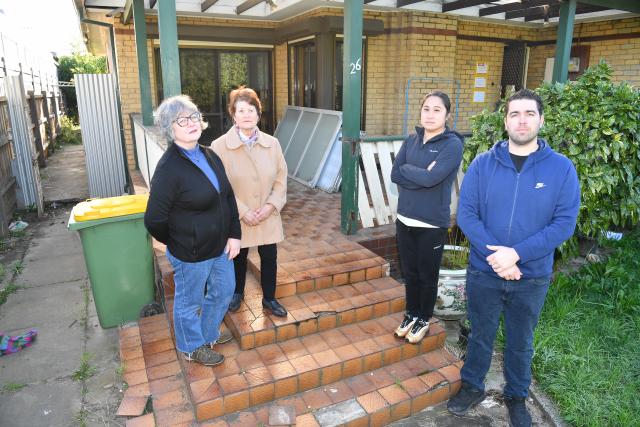A group of Maribyrnong residents and council representatives is striving to help flood-affected residents get back on their feet.
The Maribyrnong Community Recovery Committee was formed in May and comprises eight residents, Maribyrnong mayor Sarah Carter and three council representatives.
Committee chair Madeleine Serle said the group’s job is to assist residents to lead their own recovery from the October 2022 floods.
“We are extremely frustrated with the slow response of service agencies to deliver the help they have been funded to do,” she said.
“We are pushing very hard for accountability in everything we do.”
Ms Serle said the group has two things it wants to achieve.
“First, we want to get people back in their restored homes whether or not they have insurance,” she said.
“Secondly, mitigation. The fact that Melbourne Water, state government and the Maribyrnong council have failed over many decades to work out how to mitigate the risk of flooding is a huge problem, we need a solution.
“Our agenda is to work with the community, all levels of government, local indigenous organisations and all other stakeholders to stop this happening again.”
According to the committee, the October floods were the largest single metropolitan Melbourne disaster in 50 years.
“It affected around 1500 people, over 600 houses yet no one is helping as they should,” Ms Serle said.
“We are trying to lobby governments to pay proper attention given the scale of the disaster and take action.
“We have been effectively ignored.”
Ms Serle said Emergency Management Victoria disaster organisations have refused to do a proper analysis.
“We are extremely worried that if we flood again the emergency response will again be inadequate,” she said.
“The community at this point is exhausted so we are fighting to get them help.”
An Emergency Management Victoria spokesperson said a number of multi-agency reviews and inquiries have been established following the October floods.
“As part of our well-established lessons management system in Victoria, Emergency Management Victoria has captured more than 4000 observations through a co-ordinated real time learning approach in response to the flood event,” the spokesperson said.
“The co-ordinated real time learning approach was achieved through deployments, debriefs, interviews, observations and submissions, and included data collected at a state, regional and local level.
“This multi-agency program ran throughout the response, relief and recovery phases of the flood event, lessons identified will be shared across the emergency management sector.”
Jennifer Pittorino







